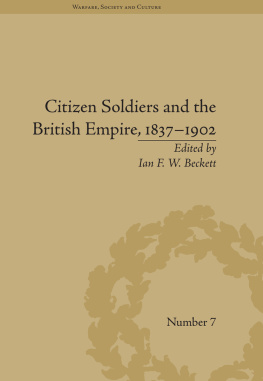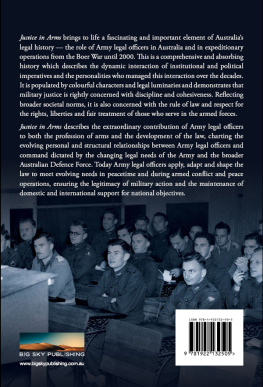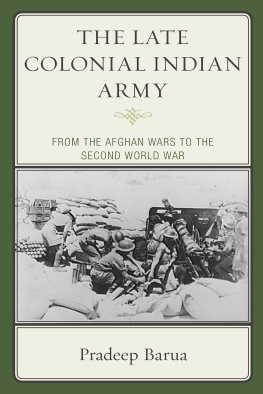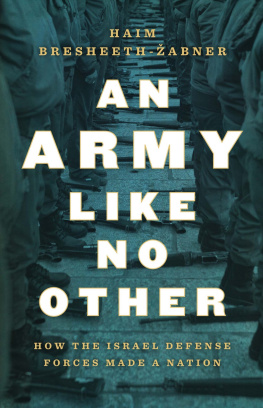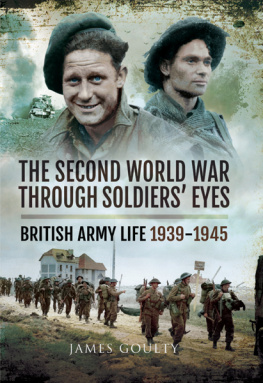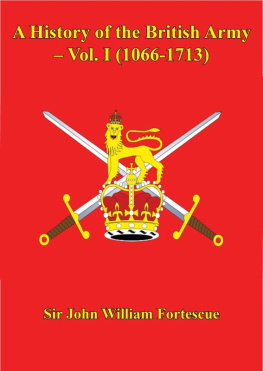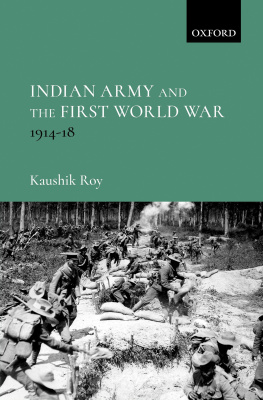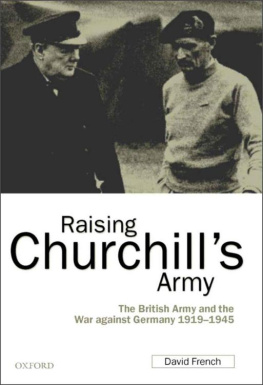First published in Great Britain in 1985
by Manchester University Press
Published in 2004 in this format by
P E N & S W O R D S E L E C T
an imprint of
Pen & Sword Books Limited
47 Church Street
Barnsley
South Yorkshire
S70 2AS
Copyright Ian F. W. Beckett, Keith Simpson
and Authors, 1985, 2004
ISBN 1 84468 023 1
The right of Ian F. W. Beckett, Keith Simpson and Authors
to be identified as Authors of this Work has
been asserted by them in accordance with
the Copyright, Designs and Patents Act 1988.
A CIP record for this book
is available from the British Library.
All rights reserved. No part of this book may be reproduced or
transmitted in any form or by any means, electronic or mechanical
including photocopying, recording or by any information storage and
retrieval system, without permission from the Publisher in writing.
Printed and bound in Great Britain by
CPI UK
Pen & Sword Books Ltd incorporates the imprints of
Pen & Sword Aviation, Pen & Sword Maritime, Pen & Sword Military,
Wharncliffe Local History, Pen & Sword Select,
Pen & Sword Military Classics and Leo Cooper.
For a complete list of Pen & Sword titles please contact:
PEN & SWORD BOOKS LIMITED
47 Church Street, Barnsley, South Yorkshire, S70 2AS, England.
E-mail: enquiries@pen-and-sword.co.uk
Website: www.pen-and-sword.co.uk
Editorial acknowledgement
to first edition
The editors wish to express their thanks to all their fellow contributors, who have been so willing to share their particular knowledge of the British army in the Great War. Special thanks go to Peter Simkins and Clive Hughes as well as Rod Suddaby and the staff of the Department of Documents at the Imperial War Museum for their assistance with the archive sources of that institution. Thanks also to Mr John Hunt and the staff of the Royal Military Academy, Sandhurst, Library for all their support for this project. Lieutenant Commander (Retd) Tony Thomas of the Department of War Studies and International Affairs at Sandhurst and Mrs J. Isaac were kind enough to draw the maps, while John Keegan also agreed to grace the volume with a foreword.
| Sandhurst | I.F.W.B. |
| May 1984 | K.R.S. |
* * *
Editorial acknowledgement
to this edition
The editors wish to thank Rupert Harding and Pen & Sword Books for bringing this book back into print. They and their fellow contributors were delighted by the original response to their work. While scholarship on the Great War has advanced immeasurably over the last 20 years, it is our belief that these essays have retained their utility for those interested in the British army during the Great War.
I.F.W.B.
K.R.S.
April 2004
John Keegan
It is a great pleasure to be invited to contribute the foreword to a book that tackles a neglected aspect of the First World War, the nature and composition of the British army and its relationship with the nation from which it was drawn. Much has been written about the French, German, Russian or Austro-Hungarian armies of 191418, on their leaders and their operations. Much also has been written about British operations in the war one thinks, particularly, of those endlessly controversial episodes, Gallipoli and Passchendaele and about British generals. But the British army has been the subject of scarcely any study since Ian Hay produced The First Hundred Thousand in the thick of the fight seventy years ago.
Ian Hays propagandistic but still readable novel was devoted to the raising of the first of the Kitchener armies K One, as the jargon of the day had it. That reminds us that Britain, between 1914 and 1918, put four armies into the field in succession, each representing a different strand of the nations military tradition.
The Kitchener armies came third, at least chronologically. First to take the field was the regular army, which, since 1908, had been organised in large part to provide an expeditionary force in time of war. Its concentration area in 1914 was Aldershot, whence six infantry divisions and a large cavalry division were by plan to be sent abroad. Political considerations limited this number initially to four, but eventually eight altogether were to go to France, while in 1915 a Guards division was also formed in imitation of those in the German and Russian armies. Moreover, by substituting Territorial for regular battalions in India and the colonies, three more divisions, the 27th, 28th and 29th, were eventually raised from the imperial garrisons. Thus the regular army, though only 200,000 strong in 1914, was ultimately able to field twelve divisions of infantry, all of which were deployed either on the western front or at Gallipoli.
It did so, however, only by absorbing its reserves, which were inadequate to make good losses suffered when the fighting became intense. That was soon. By December 1914 the regular army in France had lost 80,000 killed and wounded. Its units and formations were skeletons and could hardly hold the sector of the line allotted to them, east and south of Ypres, during the harsh winter of 191415. Fortunately the Germans, too, had exhausted their reserves, both of men and of matriel, and so left the survivors of the original BEF largely in peace during those months.
And there was relief at hand. The Territorial Force, with its fourteen divisions of infantry and fourteen brigades of yeomanry cavalry, was by November 1914 just reaching a state of training and equipment where it could be sent abroad. The TF was an oddity by international military standards: a voluntary militia only tenuously attached to the regular army. Originating in the Volunteer movement of 1859 itself a spontaneous phenonemon historians still find difficult to explain it had gradually been regularised, and equipped to regular standards, though too often it made do with what the regulars had just discarded. In the crisis of 191415, however, such defects had to be overlooked. During the winter months the TF divisions came gradually into line. By the autumn of 1915 they were numerous and experienced enough to supply much of the strength of the Loos offensive.
At Loos the Territorials suffered heavily. But it was not such losses that put a check on their further expansion. Kitchener, the Secretary of State for War, had taken steps on his appointment in 1914 to divert reserves of manpower in a direction away from the Territorials. In part he anticipated, perhaps wrongly, an incapacity among the Territorial County Associations, the organising bodies, to raise reserves quickly. In part he wanted the creation of a great new national army under his own hand. The result was the First Hundred Thousand of September 1914 100,000 volunteers, engaged to serve three years or the duration followed, such was youthful British enthusiasm, by four more hundred thousands. Each produced six divisions of infantry, many of them recruited on the Pals or Chums principle, which would see whole streets, factories, football clubs and Boy Scout troops devastated by grief when such units eventually entered combat and left their quota of dead in No Mans Land.



